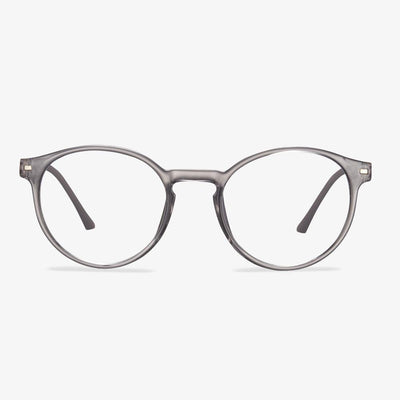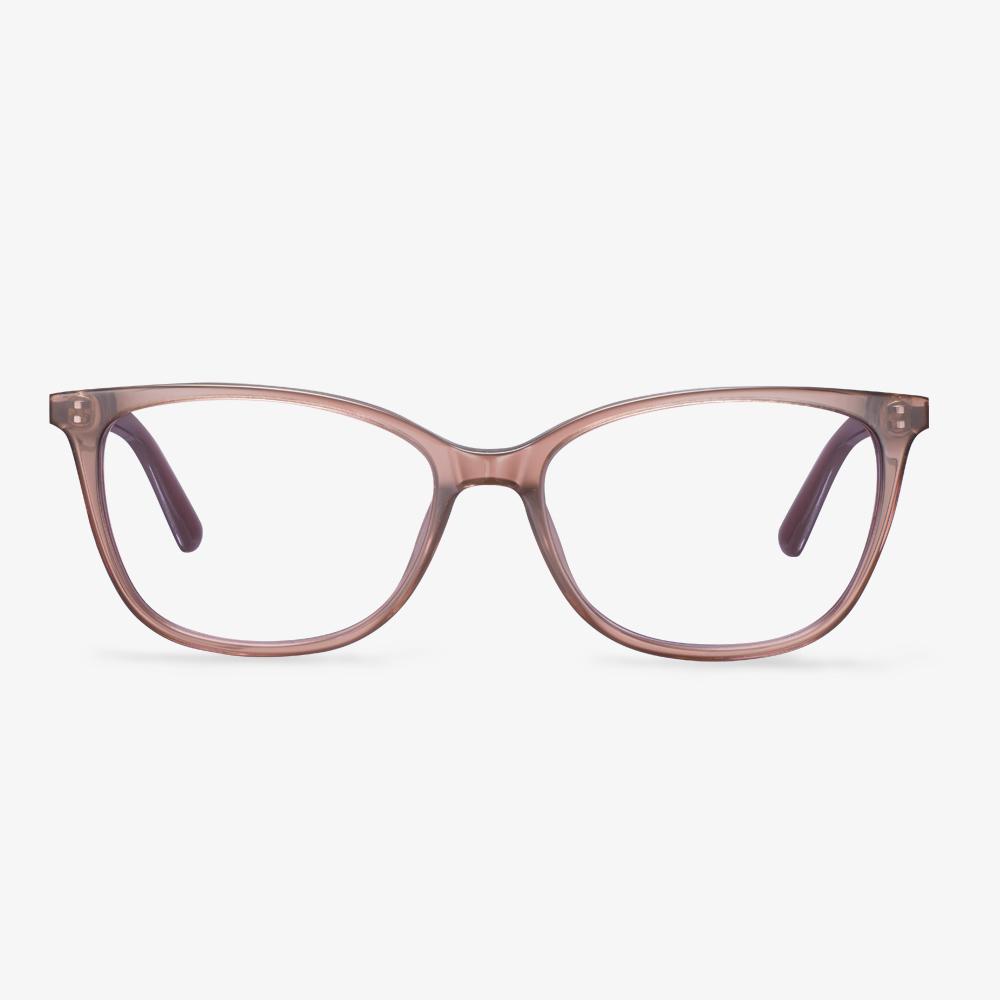Choose clear glasses with the right size for kids.
The choice of children's glasses should be based on the size of the child's face and the height of the nose. Most of the bridge of your child's nose is low, so you can choose an adjustable eyewear frame with a separate nose pad to avoid touching your eyelashes or wearing the glasses uncomfortably. If the frame is too small, the field of view will become smaller. The frame is too large, they are not stable, and the weight will increase. So children with glasses frame should be moderate in size.
Progressive Lens
Standard progressive lenses are multifocal lenses with three observation areas, farsightedness, intermediate vision, and nearsightedness. Unlike bifocals, there are no visible lines between each viewing area. They have a seamless, invisible design, where the optical power changes 'gradually' throughout the lens. Many people confuse 'bifocal' or 'trifocal' with 'progressive' but remember that bifocals and trifocals have visible lines in the lens, while progressive lenses do not. Because progressive lenses have no lines in the lens, they are more popular multifocal lenses than bifocal lenses.
The main observation area of the progressive lens is a far distance, the smaller area at the bottom of the lens is used for myopia, and the middle area in the middle is smaller. Standard progressive glasses are very suitable for general purpose glasses, focusing on hyperopia activities (such as driving and walking) and sufficient area in the lenses for nearsighted activities (such as reading and computer use). The left and right sides or 'convex corners' of the lens are deliberately blurred to achieve an invisible design. The clearest line of sight in the gradual process is from the center to the top of the lens.
Distinguish true and false myopia firstly.
Children's eyesight is not good for many reasons, excluding organic reasons. Hyperopia, myopia, astigmatism, and other refractive error factors can cause. False myopia, called modulatory myopia on medicine, is caused as a result of eye ciliary muscle overregulation. False myopia is in ciliary muscle paralysis, and the degrees disappear after putting pupil to remove adjustment.
Are rimless glasses more expensive than full-frame glasses?
In terms of brand pricing, there are several kinds of prices. For example, the cost of production should be considered. In reality, we ignore the cost of designing products by designers, the cost of workers' wages, and the cost of instruments invested in the early stage. The rimless glasses price is determined according to the material, so if you choose the material of relatively good, the price will be more expensive. In general, the eyeglasses frames are from about 50 yuan to hundreds of yuan. Of course, sometimes the price of rimless glasses is about thousands of yuan. It all depends on the material and lens. You can choose according to your own financial conditions.
The birth of progressive lenses
In 1907, British optometrist Owen Aves first proposed the concept of progressive lenses and got the first patent of progressive lenses. In 1910, Henry Orford Gowlland designed and made a similar lens in Canada, but technical limitations prevented it from succeeding. In 1959, Bernard Maitenaz, a French optical and mechanical engineer, developed the first progressive lens, which was successfully put into the commercial market for the first time and became a milestone in the history of world optometry. With the development of science and technology, the design of progressive lenses has been greatly developed.
Blue light in natural light
Blue light is not the unique light emitted by electronic products, but the visible light that exists in natural light, usually with a wavelength of about 400-500nm. The blue light in the entire waveband can be subdivided into two parts. One part will cause optical damage to the retina of the eye and accelerate the oxidative senescence of cells in the macular area of the retina. Usually, the wavelength of this part of blue light is between 415-450nm, and its damage to the eyes is gradually accumulated and formed. There is also a part of blue light that is beneficial to our human body, that is, blue light with a wavelength of about 480nm. It can adjust biological rhythms and is helpful for sleep, mood, and memory. In addition, experiments have confirmed that daily outdoor activities in the sun can effectively prevent the occurrence of myopia, and short-wavelength blue light may play an important role.
Lens anti-fogging agent
To be specific, a layer of the anti-fogging agent is sprayed (coated) on the surface of the lens to form a dense, absorbent, ultra-thin, and ultra-transparent biological coating. The coating chelates the droplets inside the coating (chelating means processing the material into a digestible form) to form a continuous and supper transparent chelating coating, which converts the droplets into a transparent micro-glass layer, thus preventing fogging. Spray anti-fogging agent on the surface of the lens, and then wipe evenly with an ordinary lens cloth. It can be used on most lenses. They are easy to use but have relatively short anti-fogging time. During use, the lens should not be wiped or washed. Long time use will affect the lens life.


















































